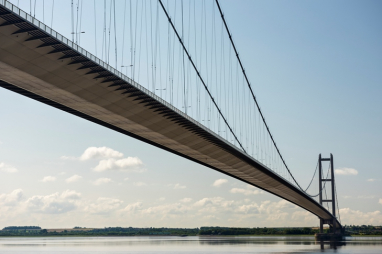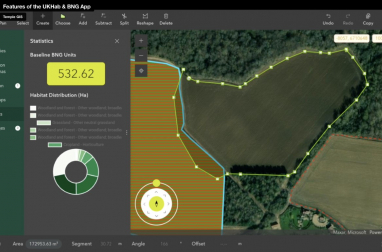- We all know how valuable our Air Jordans are once we pick them up
- adidas superstar heren groen shoes sale india 2018
- nike air force 1 uv color change da8301 100 101 release date
- womens air jordan 6 barely rose dh9696 100 release date
- SBD - You will love The Nike Air VaporMax Run Utility if - 700 Release Date - Nike Air Zoom Pegasus 36 Cody Hudson Yellow CI1723
- Air Jordan 1 Mid Bred 554724 074 2020 Release Date 4
- Miles Morales Shameik Moore Air Jordan 1 Spider Verse
- air jordan xxxv cq4227 004
- kids air jordan
- new air jordan 1 high og osb dian blue chill white cd0463 401
- Home
- News and analysis
- Info hubs
- Events
- Video
- Case Studies
- About us
- Magazine
- Advertising
Produced for the industry by the Association for Consultancy and Engineering
Comment
Seeing is believing - using digital technology to protect your assets

New technology is improving the effectiveness and efficiency of maintenance programmes for bridges and other physical infrastructure, writes Chris Hendy.
The ongoing cost of maintaining the world’s physical infrastructure is eye-watering. Take bridges alone: it’s estimated that some £50bn is spent annually on repairing bridge structures that have deteriorated under loads and environmental conditions to the stage where expensive reactive maintenance is required. Caught early, less expensive interventions can often be implemented.
Traditionally, one way to detect deterioration has been to measure how structures are actually deflecting and straining, and compare this with analytical model predictions. For example, a bridge deck deflecting more than it should might indicate a loss of stiffness from corrosion or even an inherent design problem. However, conventional techniques to collect this information require physical access to the asset to attach gauges. Since bridges carry traffic and cross hazards ranging from rivers to railways, gaining this access is often extremely disruptive and costly.
More from Atkins
So, what to do? One solution we have been using is “Digital Image Correlation” (DIC). DIC is a contactless technique that uses digital camera technologies to measure deflections and strains in structures, without requiring surface contact and disruption to road or rail traffic. The capability developed through Atkins research in Denmark has proved to be a quick and flexible method that enables assessments to be made of localised areas or entire structures. It can provide either a short-term snapshot of an asset’s performance or periodic insights over time.
We use standard commercially-available cameras and pattern recognition software. But, the clever bit is the bespoke algorithms that Atkins has written to interpret the measurement data and generate the necessary insights.
So, what does it deliver for our clients? A recent example is our work for the Docklands Light Railway (DLR) in London. The DLR was expanding its trains from two to three cars, and wanted to assess its bridge stock for the resulting 50% increase in traffic. Initial structural calculations concluded that significant strengthening would be needed to a number of bridges to provide adequate fatigue life, involving very significant expenditure plus disruption costs. However, Atkins suspected the real stresses in the bridge would be lower and strain monitoring could prove this.
Initially the client was considering using physical strain gauges, which would have required road closures to attach. We proposed DIC as an alternative, a suggestion that the client eagerly accepted. Using a camera positioned 60 metres away, we monitored both the vertical deflection and peak strain on the bottom of the deck. This assessment revealed that the stress range under trains was 40% less than had been indicated by the computer modelling, owing to the presence of previously unmodeled concrete tension stiffening. This entire exercise was carried out in a single day, with no traffic disruption – and showed no strengthening was needed at all.
This is just one many recent use cases for DIC, across the UK and beyond. To name but a few, we’ve used it to monitor bearing rotation and deck displacement on the French Horn Bridge in Salisbury, again showing that intervention was not needed; and to monitor performance of the hangers and deck of the Humber suspension bridge in Hull. Meanwhile, outside the UK, our other DIC projects have included short-term measurement of traffic-induced girder displacements and strains on the Storstrøm Bridge in Denmark; and a combination of long-term monitoring of expansion joint movement due to temperature, and short-term monitoring of hanger movements due to wind and traffic load, on the Great Belt suspension bridge, also in Denmark.
In my view, any business that is maintaining bridges or other physical infrastructure should be considering what role DIC can play in improving the effectiveness and efficiency of maintenance programmes. Looking forward, we anticipate shortly have capability to use drone-mounted DIC equipment to monitor hard-to-access parts of an asset, such as the top of a pylon or pier, bringing a further dimension to the technique.
Put simply, DIC is a concept whose full potential is not yet being realised.
Chris Hendy is a technical director at Atkins.





